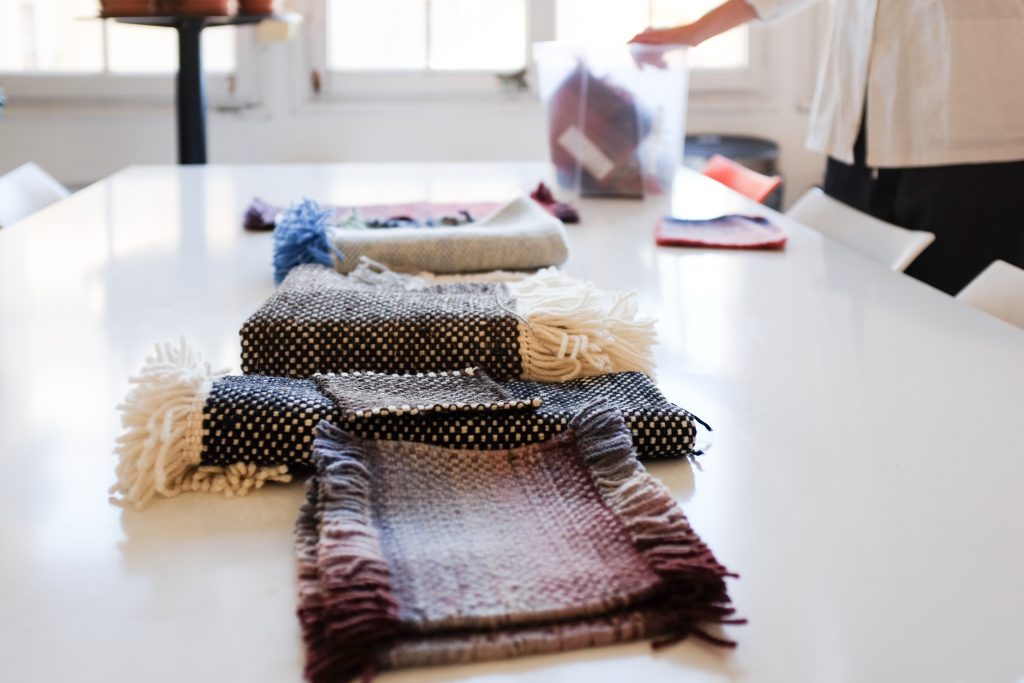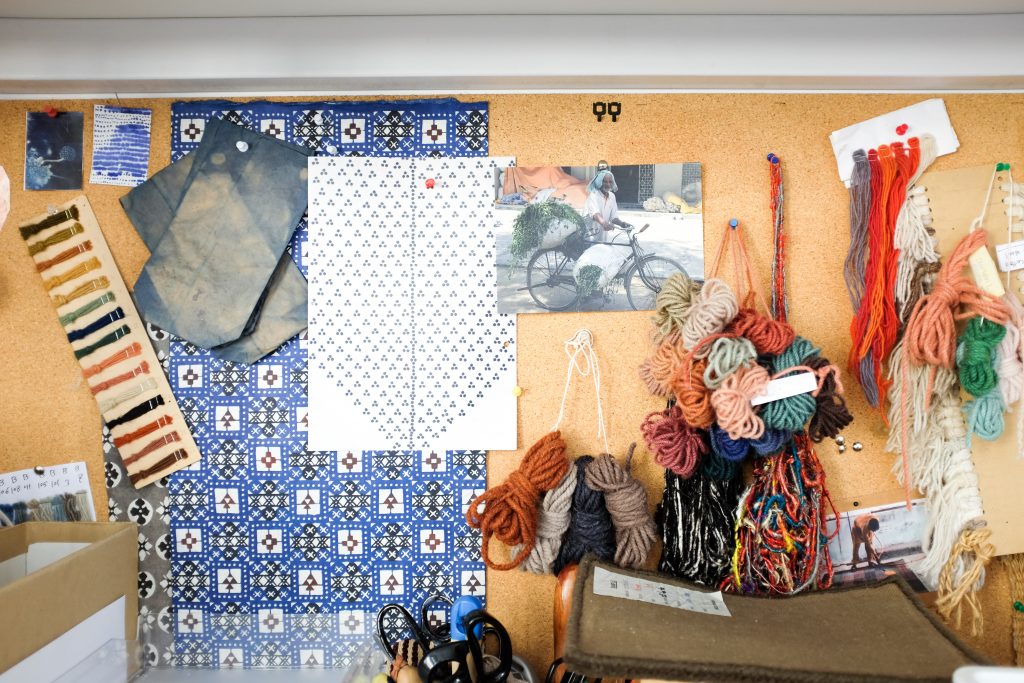Studio Visit: nanimarquina
We explore the Barcelona space with the brand’s founder and head designer

As many young designers boast of working with artisans and rediscovering forgotten techniques, some companies have been quietly doing that since their beginning. This is the case with nanimarquina.
In 1987 Nani Marquina founded the company that bears her name, choosing to be both designer and entrepreneur, after several years in interior design. Previously, she was designing for others and realized that she was missing something: handmade rugs with a contemporary design touch. It took a few years to shape her company, but the key values were established early on—including the the role of handcrafted products, the need for experimentation with materials and techniques, the desire to surprise customers, and to offer something unique.

Marquina still lives and works in Barcelona, where it all began. We meet her in her studio, a spacious and bright former industrial building in the old neighborhood of Gracia. Here she designs and works with her team of 25, five of whom make up the design team.
Working as both designer and founder, Marquina explains her double role. “For me it’s difficult to understand my job as a designer without the entrepreneur, since when I started to make rugs I thought it was impossible to design them without creating the company. Maybe the most difficult part is to separate the two sides. Probably that’s good and [makes the company] successful because, while designing, I can also think of what’s necessary to sell.”

Each nanimarquina rug is handmade in India or Pakistan, and the techniques used can vary a lot from hand-knotting to hand-looming, hand-tufting or hand-sewing. Also, the range of materials is wide: wools from Afghanistan and New Zealand, felt, jute, nettle, hemp and some more will be introduced next year.

Visiting the production sites at least two or three times per year, Marquina remains hands-on across all aspects of the company—from concept to creation and beyond. “Sometimes people ask me if it’s necessary for me to go to Pakistan because they believe it’s not really safe. And I say, ‘It’s not necessary because I have people in the company that could do that without me.’ But in those moments, I understand how to make not only my designs, but also those of the other designers. For example, the last time we went to Pakistan I understood how to change fibers and work on the thickness of some rugs,” she says.

Several products are conceived by Marquina and her staff, but there’s a long list of important collaborations with designers—from Jaime Hayon to Javier Mariscal, Ron Arad, Marti Guixé, Doshi Levien, Ronan & Erwan Bouroullec, Tord Boontje and many more. Such collaborations can be complex sometimes, because contemporary rugs are peculiar objects. She elaborates, “There are many good designers that understand very well with the values of nanimarquina. But sometimes designers want to express themselves on rugs like they were artists, using the carpet as a blank canvas.”

She refers to Estambul by Javier Mariscal as a product that blends the personal vision of the author and the essence of the brand. It’s a drawing—a simple line, traced on a white background that represents the essence of the classic Persian Rug. The rug can only be made thanks to hand-tufting, an extremely slow manual process in which artisan use a hand-operated tool to recreate the original drawing. Each piece is unique since it’s basically a freehand execution. “The concept of that design is transferring tradition to the contemporary days. People understand this carpet immediately, and I think it’s very important for a rug to be understood very quickly,” she says. In fact, she keeps the original painting by Mariscal on display in her office at the studio.

Designed by Marquina herself with Elisa Padrón, Tres is one of the most recent rugs in nanimarquina’s collection. The rug is crafted by joining three pieces (hence the name, which means “three”) in different colors and thickness of wool in warp and weft. She explains, “It’s a very simple concept, but we could imagine this carpet just because we saw how it’s made. I made a lot of trips to India and Pakistan and I love visiting the loom, touching the rugs, understanding different qualities, different techniques. That moment is necessary to organize ideas and make them come out of paper.”

She wants customers to also see how things are made, which is why their YouTube channel is a goldmine of videos that depict artisans at work. “People understand materials. It’s more important now than ever. We use phones all day, but we cannot understand how they work. But when you see handcrafted products and realize how it’s made, it’s easy to understand”.

Of course, many pieces are complex, such as the recent Shade by Begüm Cana Özgür. When Marquina saw a design by Özgür, she immediately fell in love with it—the colors, the peculiar alternation of warp and weft. But the overall complexity of the idea needed further development before becoming a product. Each rug at nanimarquina takes one to two years of development, and this one also needed constant collaboration with the young Turkish designer in order to create mathematical formulas to figure out the positioning and sequencing of every single thread used. When they headed to India to check on the production process, the team realized that the artisans sing when making the rug—the tune gives them sequencing and the lyrics are a list of the colors they need to use.

These personal and special moments touch every single rug created by nanimarquina, and that’s important to Marquina. She says, “A rug is a house in the desert. I love very much the desert. Many years ago, I traveled to Sahara without any tent and we just carried rugs with us. When you are in the desert, you place your rug and that’s your personal space. You make room for praying, for cooking, for eating, for exchanging stories. A rug always makes you feel home.”
Images by Paolo Ferrarini












